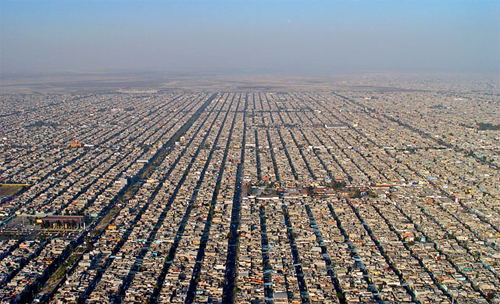Smart devices, smart people, smart ideas. These are the three key components that make up a smart city (Chris Petit 2016).
Figure 1: Own Interpretation of the Smart City model
Three things we see plenty of in Sydney - yet we are a long way from being able to call ourselves a smart city. Why? Because smart cities are all about the relationship between these things by way of COMMUNICATION. Smart city development relies on BIG DATA. This is where we're lagging behind as a city and a nation. It seems to me that government and developers are ready to fully embrace smart technology whether it be the Opal Card or Building Management Systems. But it is in the collection and the sharing and the use of big data that we're lagging behind --> we've forked out the bulk of the smart investment and yet we can't seem to take it that step further and actually use the data which is so easily available to us with these technologies.
In this course thus far, our interpretation of the Smart City has been a critical one. Challenging the now rather common notion that smart city is the future, we have been persuaded to recognise the many issues that come with adopting the smart city as our model.
Of course, millions if not billions of dollars invested in new technologies that don't solve issues such as starvation, climate change or safety is not worthwhile. But when we discuss smart ideas to build smart cities, the hope is that they ultimately lead to solving greater issues. Since my local council just forked out $40 million to add an extra lane to a road that currently has no traffic problems, why not instead spend our money (which we must have an excess of if the council is feeding into projects like this) investing in research for smarter modes of transport? Modes of transport which are faster, use less non-renewable fuels, emit less CO2, require less infrastructure, are comfortable, safer, cleaner.
Since the state government has already committed $1.2 billion (Allie Coyne, 2013) to the Opal Card system, why not invest in the collection of data from these cards to better understand public transport usage and appropriate modes of smart transport.
Figure 2: Masdar City's driverless, electric-powered Personal Rapid Transit vehicles
Is this the answer? Maybe not. But how can it be any worse than the system we have in Sydney today of vast road networks and fossil-fuel-powered personal motor vehicles? Australian governments spend $18.5 billion maintaining and upgrading existing roads and building new ones every year (National Commission of Audit 2013). The Barangaroo precinct in Sydney is a $6 billion investment in itself (Barangaroo Delivery Authority 2013). And for the UAE, Masdar City was a $22 billion investment (Peter Savodnik 2011) - including public and private transport networks. Yes, it's an expensive investment. Will it pay off? So far, we do not know. There have been setbacks and the completion date for the project has unfortunately been drawn out. But the city promises housing for 40,000 and work for 50,000 more. It is a city designed to be a centre for research and innovation. Compared to that $18.5 billion we're wasting in roads, isn't an integrated smart model worth a second thought? We know it's too late to go back, we - Sydney-siders - are used to a certain comfort in life we're not so easily going to give up. Of course, there is a bigger place for bicycles in our lives than we're currently committing but developing infrastructure for bicycles is hardly enough especally for a city that is ow so sprawled out. And our public transport systems are neither reliable, fully accessible or particularly safe late at night. So, how do we connect our city? Investment in smart infrastructure must have some place in our city's future. But whether the answer is smart technology or not, the solution right now relies on smart thinking - that is integration. The collection of data on a big scale, it's use in connecting smart people and smart ideas with smart technology. Or maybe it will be using smart technology to find smart ideas or inform smart people. However we find the relationship, it must be through integration.
This is why Sydney is still dumb. Our systems need to work together. And in working together, we become smarter - and cleaner, and safer and healthier. Ultimately, how can a smarter city be a bad thing? If it is, then it is not truly smart.
Image credit (figure 2): Masdar Institute 2016, Campus & Community: Transport, Masdar, accessed 20 March 2016, <https://www.masdar.ac.ae/campus-community/the-campus/transport>.
References:
- Petit, C. 2016, Smart Cities, lecture at the University of New South Wales, 17 March 2016.
- Coyne, A. 2013, 'NSW pours $15m more into Opal project', IT News, 9 December 2013, <http://www.itnews.com.au/news/nsw-pours-15m-more-into-opal-project-366941>.
- National Commission of Audit 2013, What do governments do in Australia today?, Australian Government, accessed 20 March 2016, <http://www,ncoa.gov.au/report/appendix-vol-1/3-what-do-govs-do-in-aust-today.html>.
- NSW Gov Barangaroo Delivery Authority 2013, Overview, Barangaroo, accessed 20 March 2016, <http://www.barangaroo.com/discover-barangaroo/overview.aspx>.
- Savodnik, P. 2011, 'Masdar City, Castle in the Sand', Bloomberg, 9 Dec 2011, <http://www.bloomberg.com/news/articles/2011-12-08/masdar-city-castle-in-the-sand>.





